
Welcome to Mujo
Mujo
Mujo intends to offer a transport option which aims to bridge the gap between public and private transport by offering a customisable and adaptable ride-sharing option to the users. Mujo's design builds from the theory and identified issues of privacy, deadheading, external/internal feedback and access to the vehicle when opting for a ride-share option.
March 22 - November 22
Mujo
Mujo
Mujo - autonomous ride share vehicle aims to solve problems faced by traditional rideshare services with the assumption that these problems will still prevail in the sector even with the deployment of autonomous technology if correct steps are not taken.
The design intends offer a transport option that bridges the gap between public and private transport by offering a custom ride environment.
Mujo tackles issues such as deadheading, feedback and access the ride service vehicles.
Being aware of the complex environment the vehicles operate in today and the distinct user needs within this sector - the concept design is true to its permanent form but offers customisable seating environment, controlled dispatch and feedback system as to ensure productive application of these technologies.
Problem
I. Deadheading
Deadheading refers to the time spent driving while the driver is waiting to get a ride. It also includes the time driving to and from passengers. Deadheading currently account for 43% of the total drive time when using ride-hailing services.
II. Privacy
It was discovered only 15% of the ride-hailing trips in U.S. are shared. The main reason being privacy and safety while sharing a ride.
III. Accessibility
Most of the ride-share options today offer no wheel chair access or assistance features except button brails and in-app voice assistance. This makes it hard for users to locate and access these vehicles.
IV. Communication
Autonomous vehicles (AV) today have come a long way but present us with an issue of communicating with pedestrians and other vehicles on the road. Lack of feedback or almost no feedback with the immediate environment often leaves people confused about what the AV is thinking and what would it's next move.
01. Seats
The Impermanent Seats - first and one of the most important element of this concept, which makes it possible to offer private and shared seating options within the vehicle.
The vehicle is equipped with 4 seats allowing room for 4 passengers. Each passenger can choose to ride solo in private seating environment or ride with up to 3 more passengers in a shared seating environment. The rotating seats combined with dynamic partition digital screens (explained in detail below) makes it possible to change your ride experience with all the control in hands of the passenger.
Further, the seats in addition to circular motion also moves in a linear fashion. The seats were iterated to offer room for wheel-chair users. The seats can be moved forward making room for the wheel-chair user and stays in place till the end of their journey with Mujo.
02. Layout
As mentioned previously, Mujo is capable of offering both a private and social environment. These seating environments can be divided into 3 layout settings which is possible with the moving seats and screens. These 3 layouts can be classified as Private, Semi-Shared and Fully -Shared ride options.
The classification between layouts were created to draw a clear distinction in environment to cater different user needs.
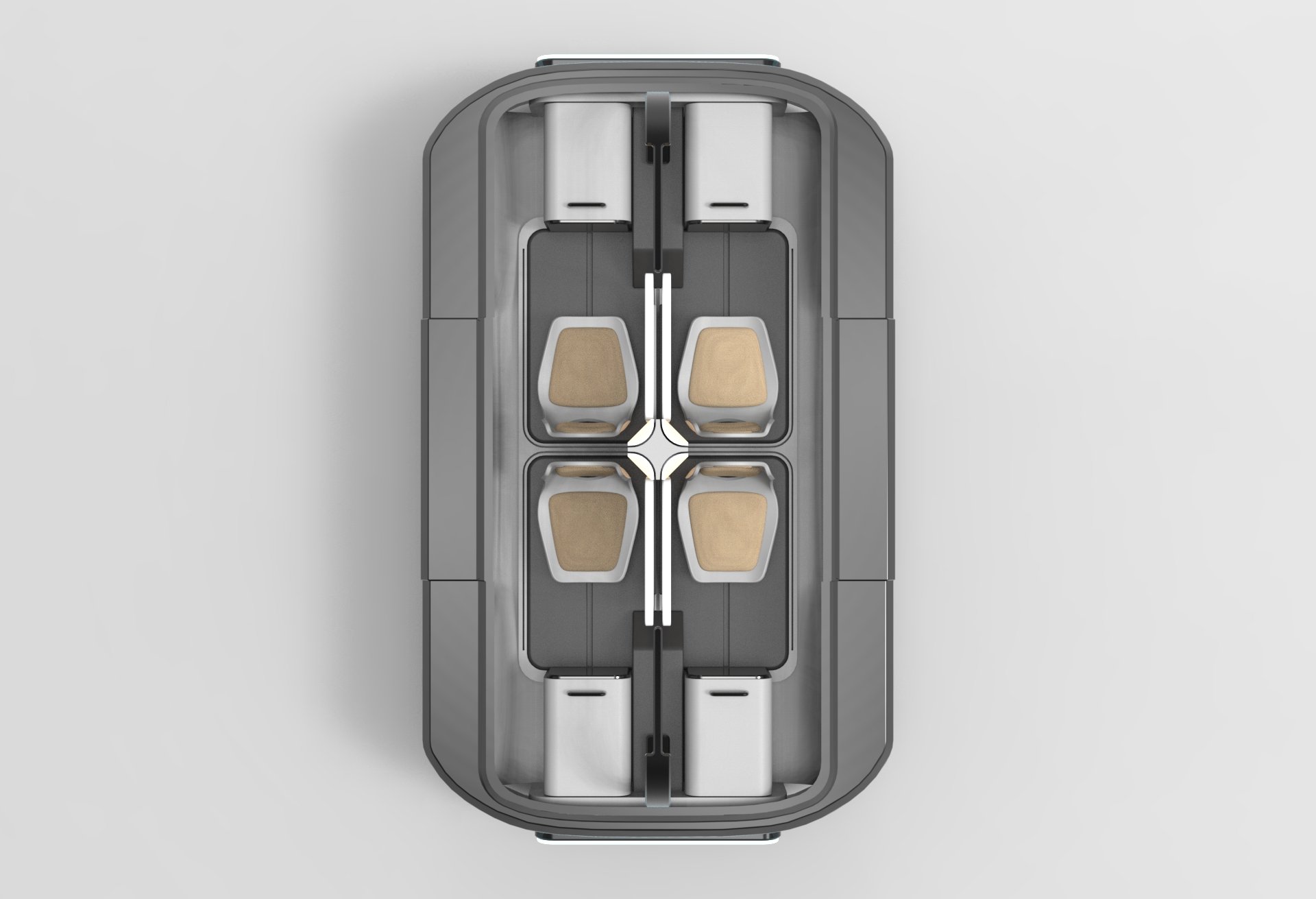


03. Access
The drop down side door access allows for straight walk-ins from the side-walks and also creates a pathway for the wheelchair users to access the vehicle.
As the side doors drop down → the seats rotates and move forward near the storage compartment and stays their till the trip is finished.
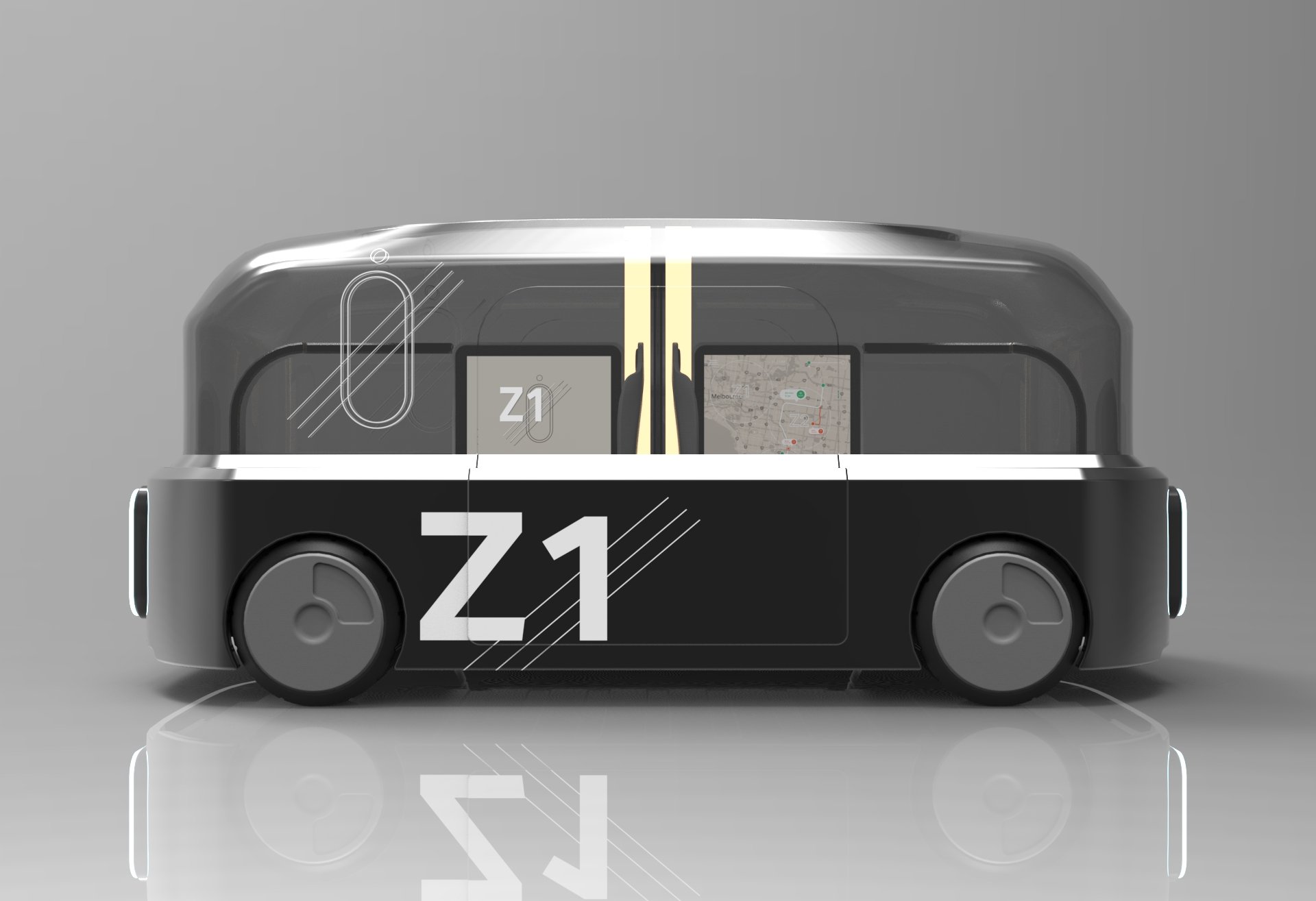

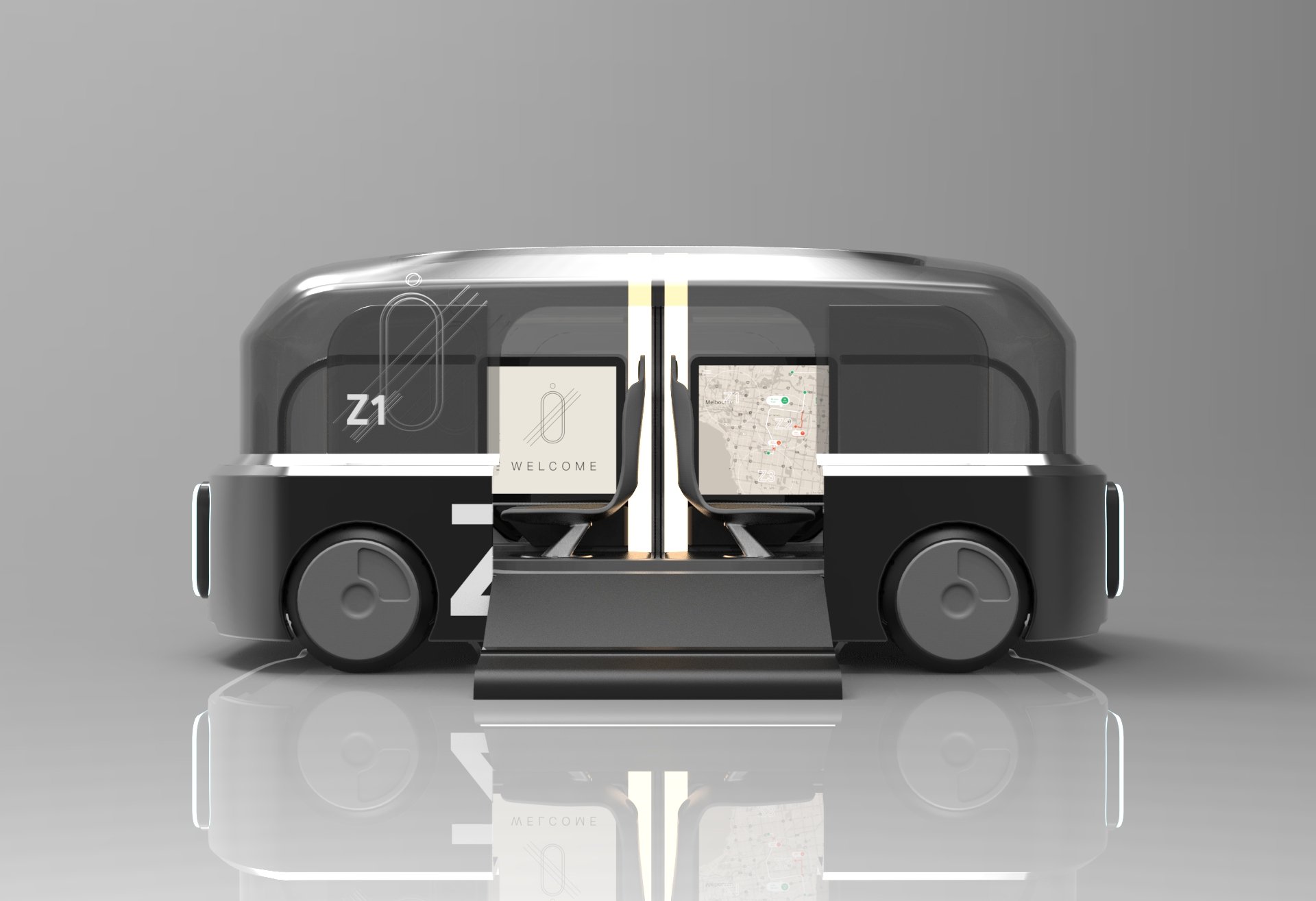
04. Storage
The vehicle offers Individual storage compartments for each passenger for enhanced security. Further, it helps add to the personal sense of space when sharing the vehicle with someone else.
05. Summon Spots
The summon spots are proposed to be installed according to zones with a set radius where the number of vehicles are restricted to each zone.
Indications
Idle (Blue) - Rides can be hired when AV is present at the summon spot
Active (Green) - AV on the way to the summon spot indicating ETA
Busy Indication (Red) - AV completing a ride and is not available for hire



06. Pick-up & Drop-off
Each summon point offers an installation opportunity instead of a door to door ride-share. Mujo can be summoned using the summon points located in your neighbourhood to call for Mujos assigned to that specific zone as to reduce the miles travelled when taking a ride or calling a new one. These rides can also remain parked after a drop-off at these summon points till booked for another ride.
07. Feedback & Interaction
As the Mujo approaches the pedestrians are given a light signal by the vehicle's front and rear lights. This can also be complimented with signals and indications symbols being communicated via two displays.
Adding intervals between feedback and interaction for improved safety when crossing in front of a Mujo. (Just like our good old yellow light in a traffic light!)

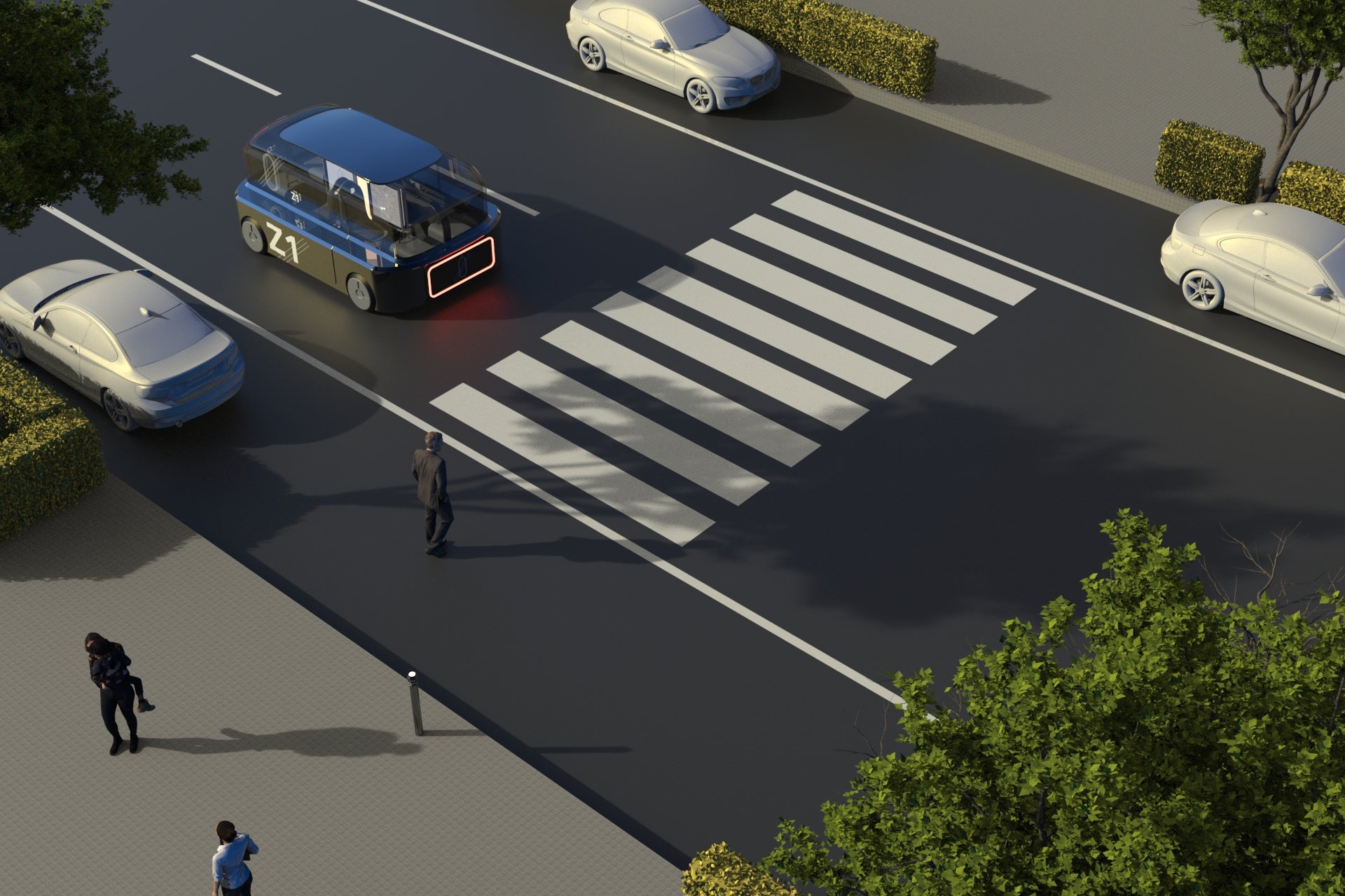

07. Interface and Control
Mujo offers a basic and straight forward interface all operated on a display. Each passenger section is assigned with a display of its own providing equal attention, features and control for each passenger.
Below the screen showcases the ride function on the left and the journey on the right when riding with Mujo.

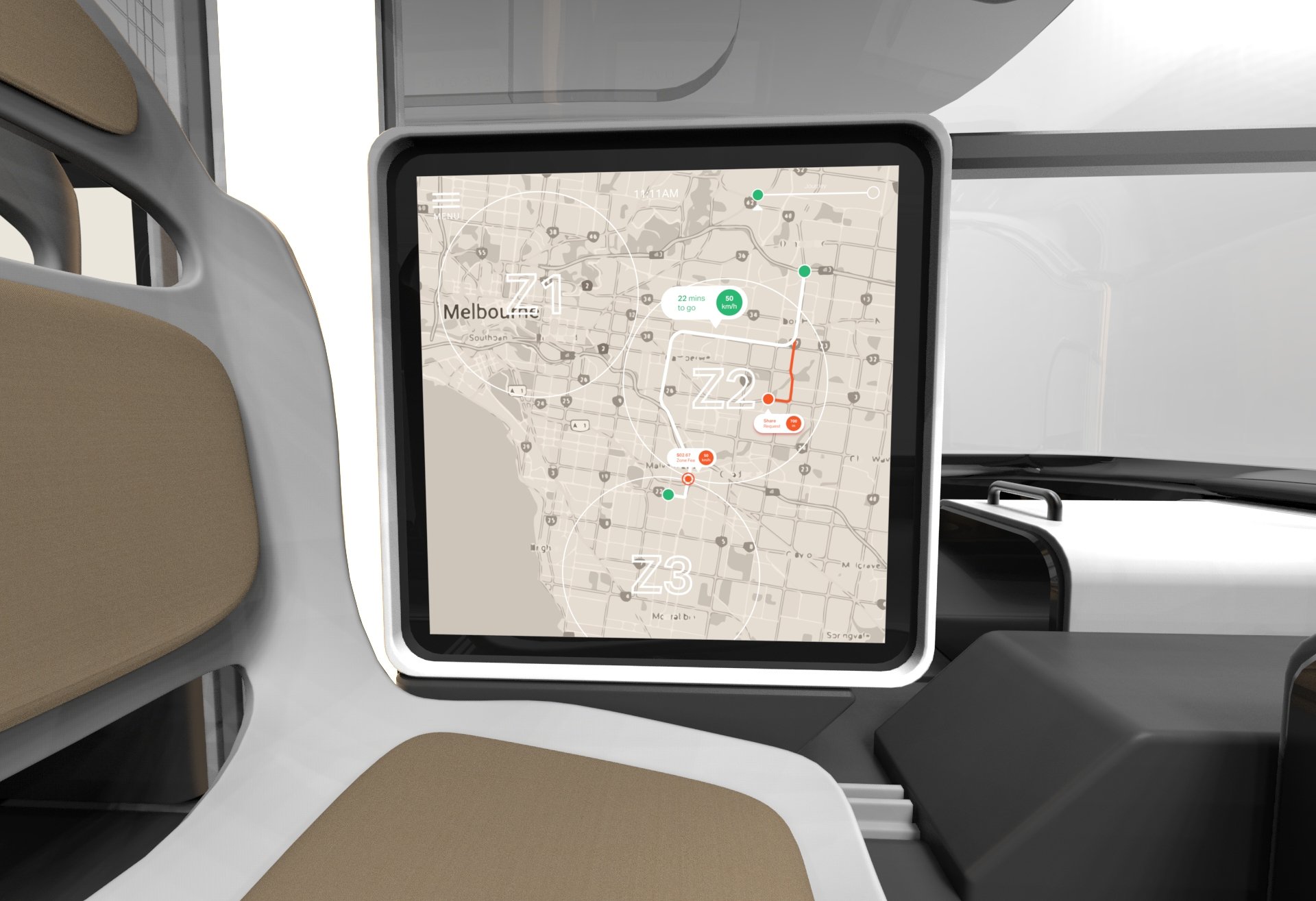
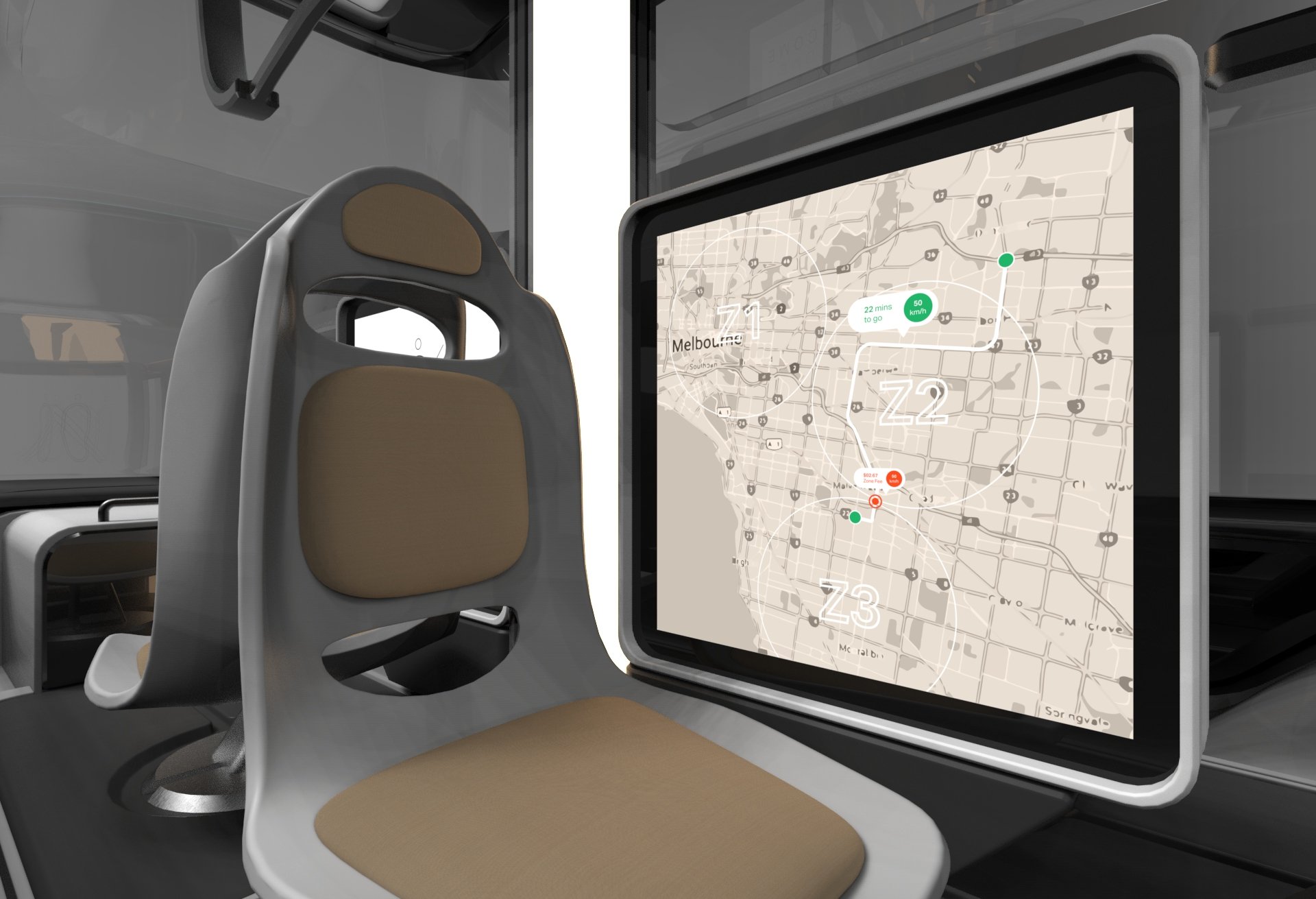
Learn More
Learn More
To learn more about Mujo, the design process and research behind the project - Click here to be redirected to my Design Honours website for Monash.










